Accommodation requirements
In order for the kitchen to be safe and convenient, certain rules must be followed:
- Placing electrical outlets in the kitchen is only possible where moisture is excluded.
- They should not be located more than 1 meter from the appliance.
- Competent distribution is possible only after all the parameters of the kitchen set (height, depth and width of cabinets and drawers) are clearly defined.
- The total power of electrical appliances per outlet should not exceed the permissible rate.
How many outlets do you need?
Before planning the installation of outlets, you need to calculate the number of connected household appliances, not forgetting about the hood, kettle and microwave oven. It is also worth considering the output of electricity for lighting under the wall cabinets. 25% should be added to the resulting quantity in case other devices appear in the future. The most convenient place to start is by placing outlets for built-in appliances.
What are the best sockets to use?
The choice of sockets depends not only on the design and layout of the kitchen, but also on the specifics of their use. In the cooking room, special products with an increased level of moisture protection are appropriate - with silicone membranes (IP 44), which protect the contacts in the junction box itself. Such products come with covers or curtains, thanks to which debris and splashes do not get inside. Conventional overhead sockets are rarely used.
If you need additional sockets in an already repaired kitchen, and you don't want to spoil the walls or an apron, you can purchase special pull-out units and hide them in the countertop. With a light press, a protective part comes out, which opens access to the network. Another option is an overhead corner power outlet or a corner power filter, which are installed under the cabinet of the kitchen unit.
The products built into the worktop look great and are almost invisible, but they are inconvenient for constant use. Such devices are useful when you need to connect the device for a short time (blender, combine or mixer), but for an electric kettle this option will not be so advantageous.
The photo shows a convenient tee that opens when necessary. When not in use, the lid remains closed.
How to arrange correctly in the kitchen?
To improve the safety of use, products must be freely available. Also, the height of the sockets in the kitchen depends on the type of equipment and the arrangement of kitchen furniture. For ease of understanding, experts divide the kitchen into three levels: upper, middle and lower.
Refrigerator sockets
The socket group for this appliance should be on the lower level: this is how the kitchen looks neater. It is recommended to connect the refrigerator at a height of about 10 cm from the floor. Usually, manufacturers indicate which side the cord comes out from: this is important information to help you place the socket group on the right side.The fact is that the refrigerator cord is short - only a meter - and the use of extension cords is prohibited according to the instructions.
If you intend to turn off the refrigerator more often than usual, then the connection above the countertop will become more acceptable. Also, this method is convenient if, when mounting a point behind the appliance, its body protrudes ugly forward and spoils the impression of the kitchen.
The location of the electrical outlet behind its sidewall cannot be called aesthetic and competent, since the unit will have to be moved away from the wall. In some small kitchens, even such a small waste of valuable centimeters will be noticeable.
In the photo, the outlet group for the refrigerator is installed to the left of it in the apron area: thus, the device is level with the kitchen set.
The location of the sockets in the work area above the tabletop
In a standard kitchen, the maximum height of the pedestals reaches 95 cm. Cabinets are hung above the working area, creating a partition for the apron. In this place, several electrical outlets should be placed, but not in the middle, but closer to the lower pedestals. The optimum height is 15 cm above the baseboard of the worktop. In this case, they can be covered with electrical appliances that are planned to be constantly kept on the work surface: for example, a coffee machine.
There is another opinion: apartment owners who cook a lot prefer to place the outlet groups under hanging cabinets. So it is more convenient to pull out the plug, without fear of touching and brushing off the contents of the table.
Everyone chooses the number of devices himself. It is recommended to place one set in one of the corners, the other between the sink and the electric stove at a sufficient distance from them. If pipes are nearby, protective covers or rubber seals should be installed.
Another interesting way to properly position the sockets above the kitchen work surface is to install a track with movable sockets, as in the photo below. This option not only serves as a practical and functional device, but also looks stylish.
Do not forget about built-in household appliances in hanging cabinets. If a microwave oven is installed, a separate outlet should be provided for it.
Another takeaway can be planned over the dining table. You will need it to connect a laptop, TV or charge various gadgets. Also, if you have to cook a lot for guests, it will be easy to connect a food processor or blender to it.
The photo shows one of the examples of connecting sockets in the kitchen: on the sides of the electric stove and in the corner of the headset.
Where is the best place for the outlet for the hood?
Kitchen hoods differ from each other not only externally, but also in the way of installation. Products are suspended and built-in (connected to the cabinet), as well as wall-mounted (hung separately).
If the hood is installed in furniture, then the socket is located in the cabinet or above it. The usual height for installation is about 2 meters from the floor, but for a successful execution it is better to clearly know all the dimensions of furniture and equipment in order to install the outlet group out of sight. For a wall-mounted kitchen hood, there is a concealed mounting option, when the connection point is hidden in the duct cover. The universal mounting height of the sockets for the hood in the kitchen is 110 cm from the worktop.
In the photo there is a kitchen with the correct location of the sockets, where a separate device is allocated for each device. The socket outlet for the wall-mounted hood is hidden in the cover and is therefore not visible.
Choosing the best outlet for a washing machine or dishwasher
It is better to prepare a separate wire and outlet for the dishwasher in advance, and not only before buying a car, but also before repairing the kitchen. For any equipment in contact with water, there is a mandatory rule: electric points are prohibited at the top or bottom of the sink. It is also forbidden to put sockets behind the dishwasher and washing machine. For modern built-in devices, the connection place is planned in the next section of the headset.Products must be equipped with moisture protection. The idea of sockets in the kitchen base is gradually abandoned, since not every base has a standard height.
The photo shows an approximate diagram of the distribution of outlets in the kitchen.
Hob and oven sockets
Experts are unanimous in the opinion that drawing conclusions for household appliances is risky: the equipment may simply not fit. For hobs, energy consumption should be taken into account: if the hob goes to four burners, you need a special power outlet, which is initially equipped with a power cable. It is necessary to follow the installation recommendations from the manufacturer, which he gives.
Ovens, unlike hobs, are sold with conventional plugs, so there is no need to invent anything here: they connect to ordinary electrical outlets.
If there are cabinets with hinged doors on the sides of the hob and oven, the sockets can be placed in them, stepping back about 20 cm.
If the oven is installed separately, higher than usual, then the electrical outlet is made in the lower cupboard.
Tips for organizing wiring and vending machines
Any work on electrical wiring in the kitchen should begin with drawing a plan. A competent layout of outlets and markings will allow you to calculate all the parameters and eliminate many problems.
The wiring in the apartment can be both hidden and external, but in a wooden house, internal installation is prohibited. Wood is a combustible material, so wires and other sources of ignition cannot be hidden.
Wiring is carried out only when the electricity is off.
The kitchen is a room with high humidity and is equipped with appliances with a metal case: all this dictates the installation of an introductory RCD (residual current device) in the dashboard. For grounding, you must use sockets with a special contact.
Extension cords can not be used in the kitchen: it threatens to short circuit due to accidentally getting inside moisture or overloading the wiring.
All large electrical appliances listed in the article have high power, and some of them deal with water. These reasons are directly related to the fact that the installation should be carried out in separate groups: each of them in the shield has its own automatic machine.
As a guide, you can use the illustrations below with the distribution lines of sockets in the kitchen for appliances and lighting.
How should the sockets not be located?
Mistakes when installing connection points can have many negative consequences. To safely place outlets in your kitchen, there are strict guidelines to follow:
- Do not install kitchen sockets and switches without creating a preliminary plan.
- It is not allowed to place sockets under and over sinks. In extreme cases, it is allowed to install products with IP44 moisture protection above the siphon.
- Do not install devices near the gas stove in the kitchen.
Placing sockets in the kitchen is a difficult and dangerous process that should be entrusted to electricians, but with the right tools, special knowledge and skills, you can handle the installation yourself.

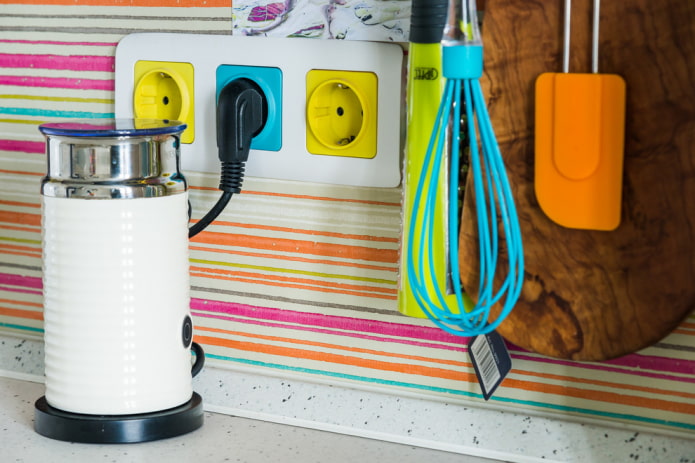
 10 practical tips for arranging a small kitchen in the country
10 practical tips for arranging a small kitchen in the country
 12 simple ideas for a small garden that will make it visually spacious
12 simple ideas for a small garden that will make it visually spacious
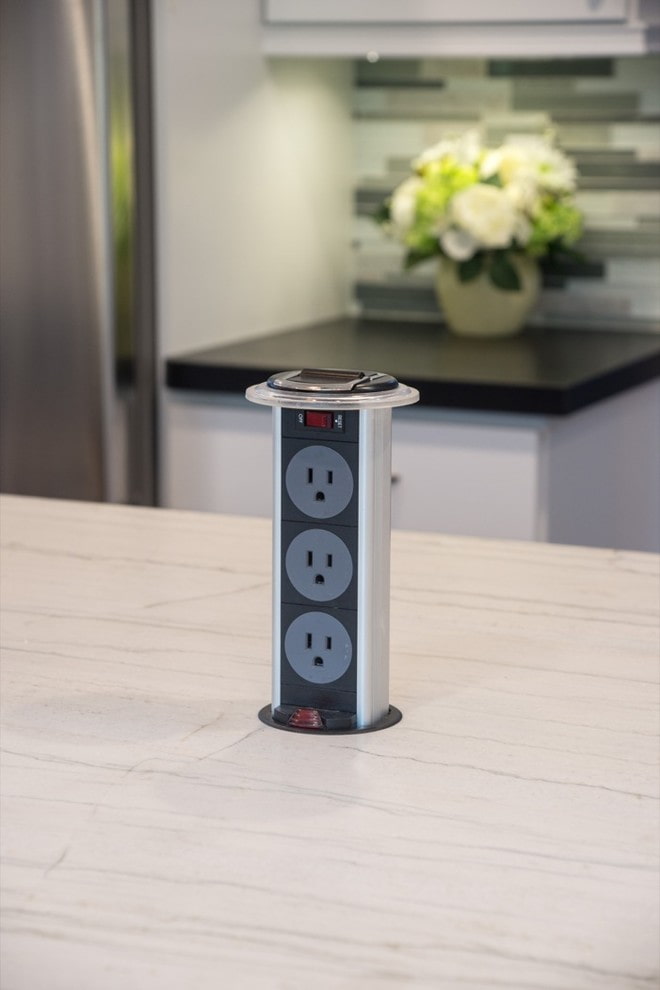
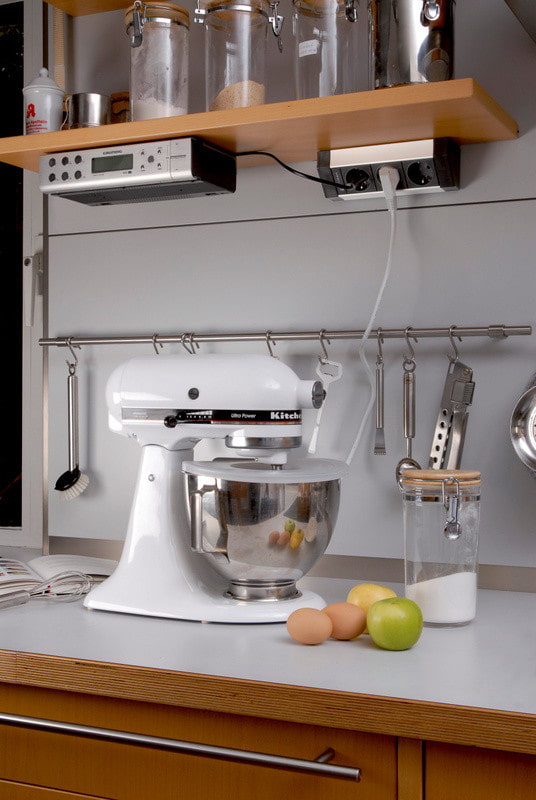
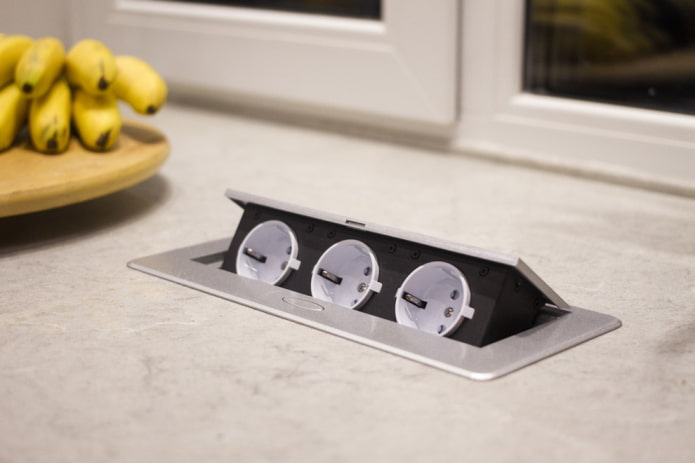
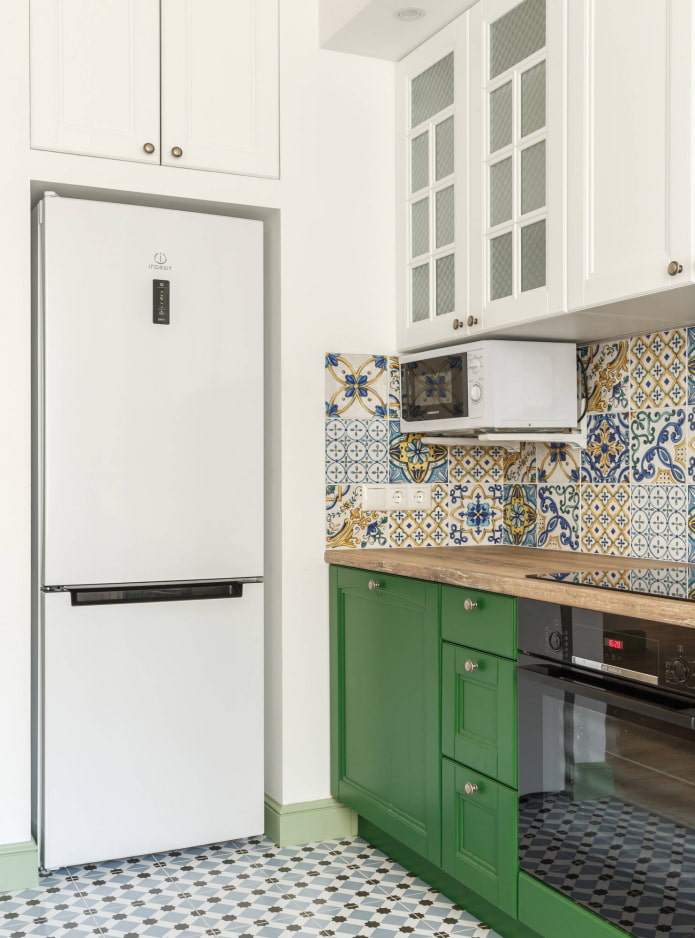
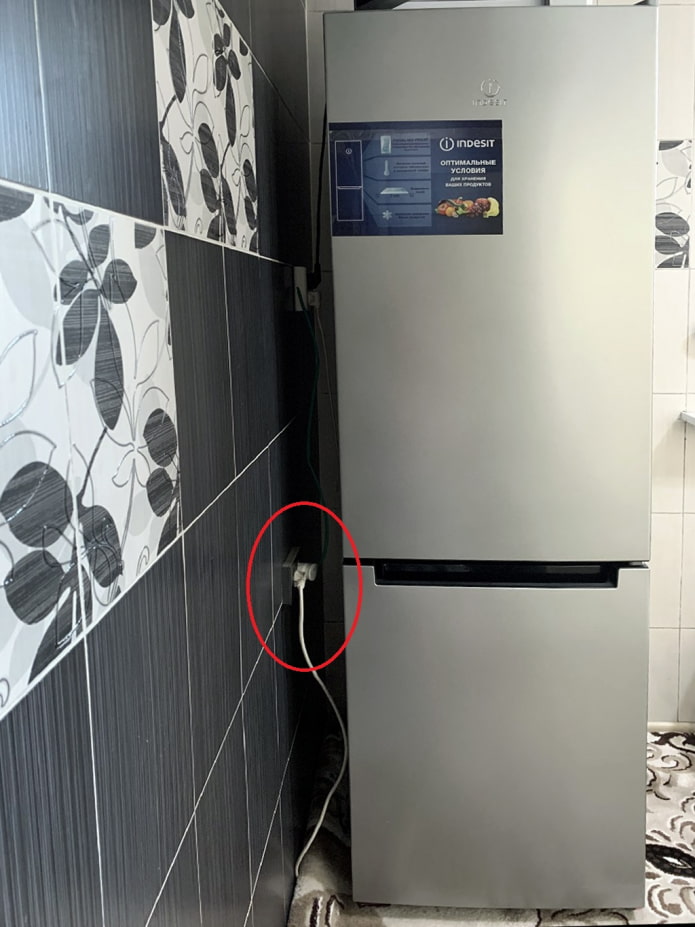

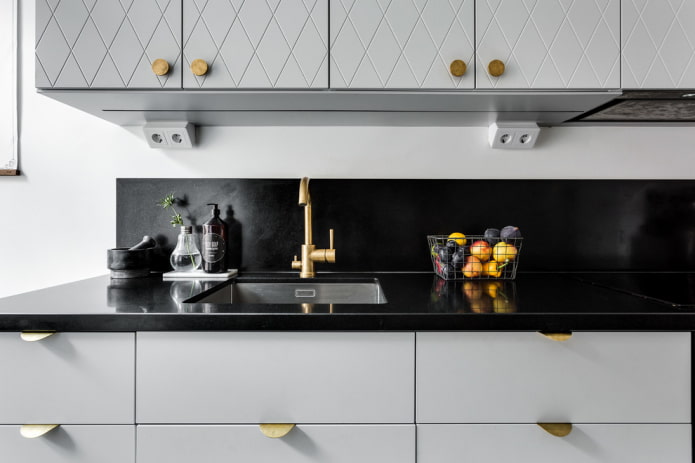
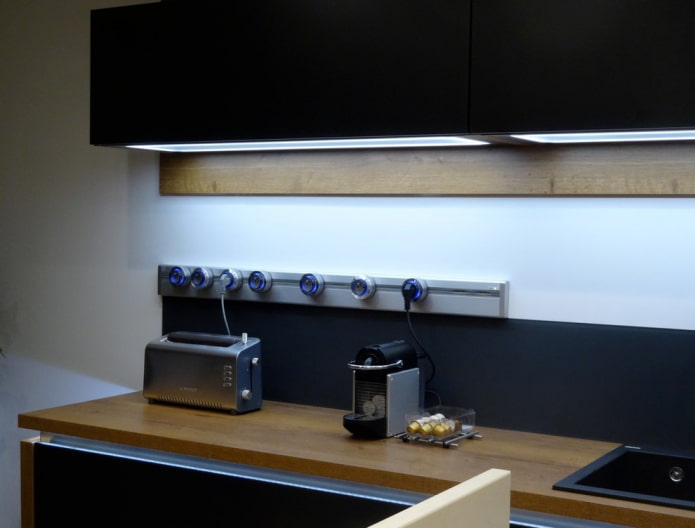
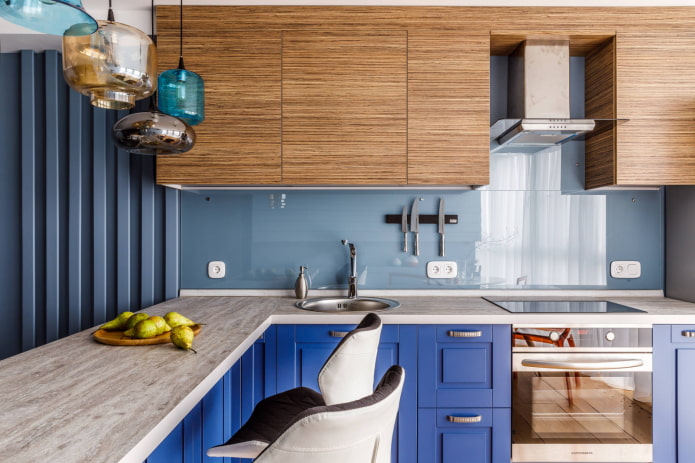
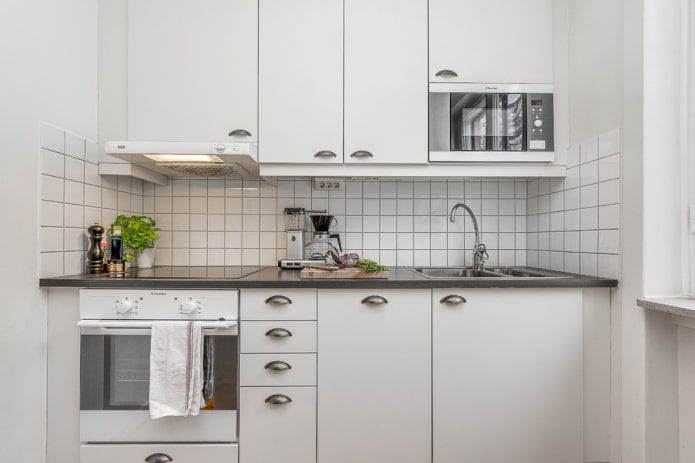
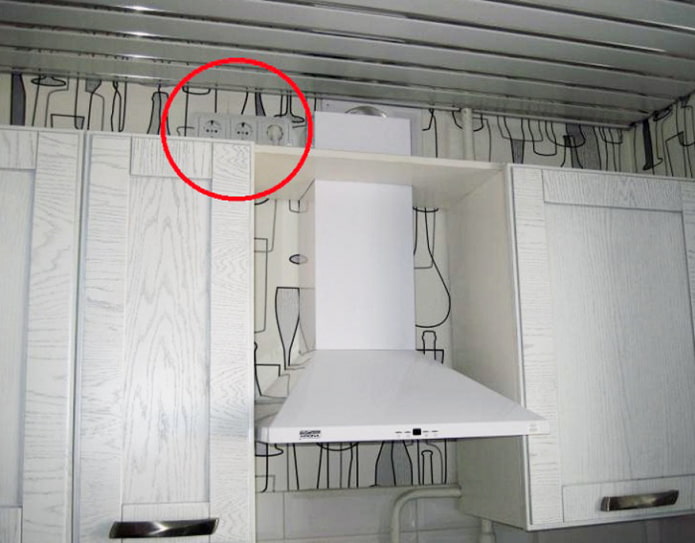
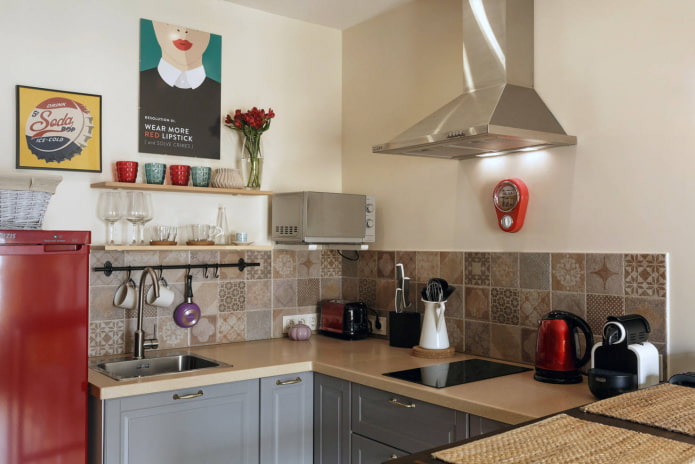
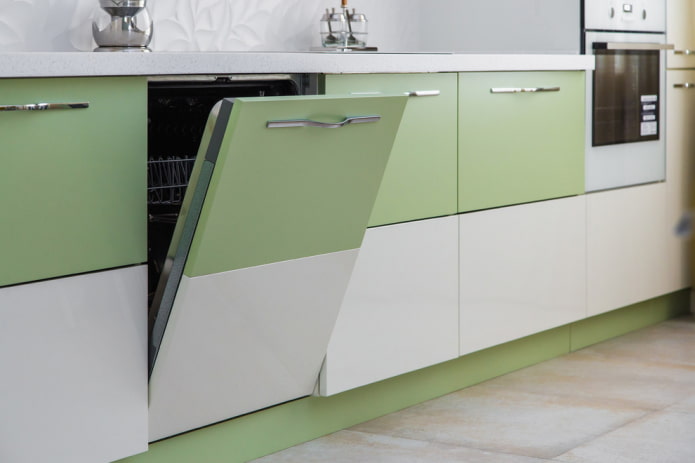
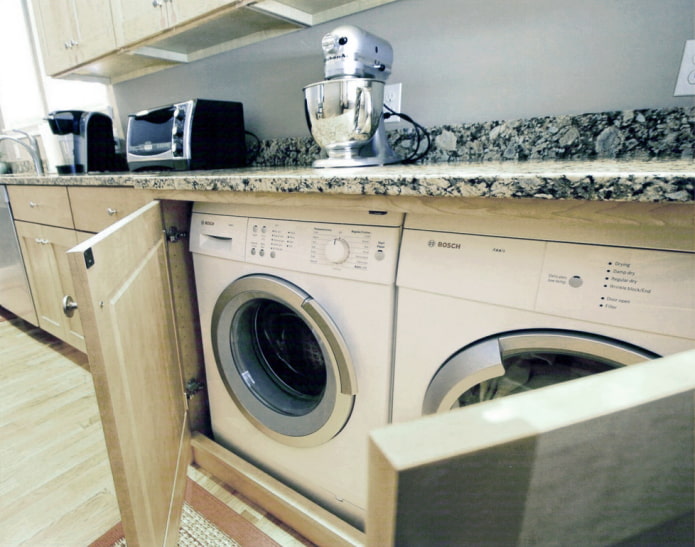
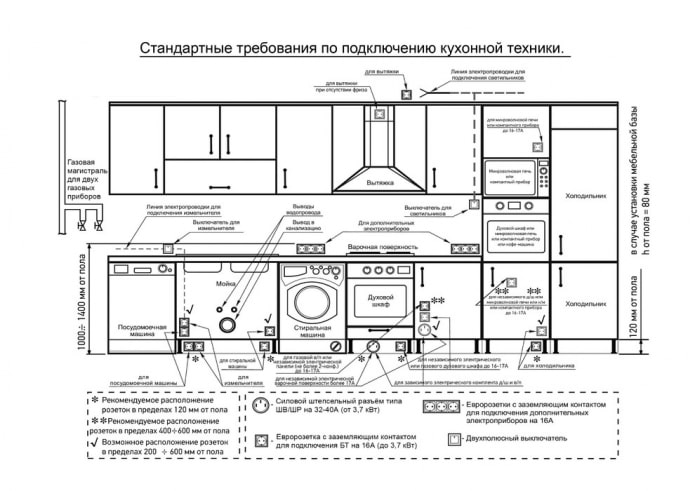
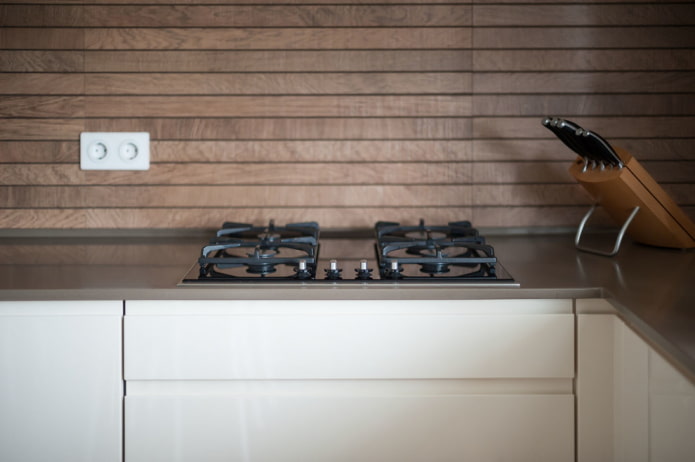
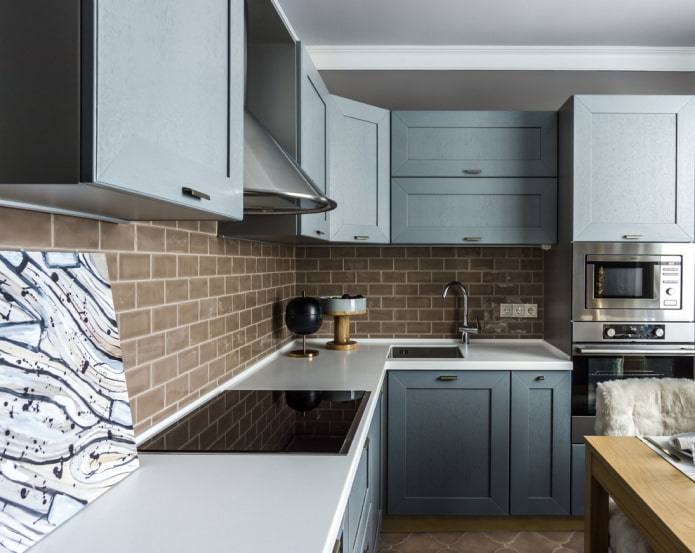
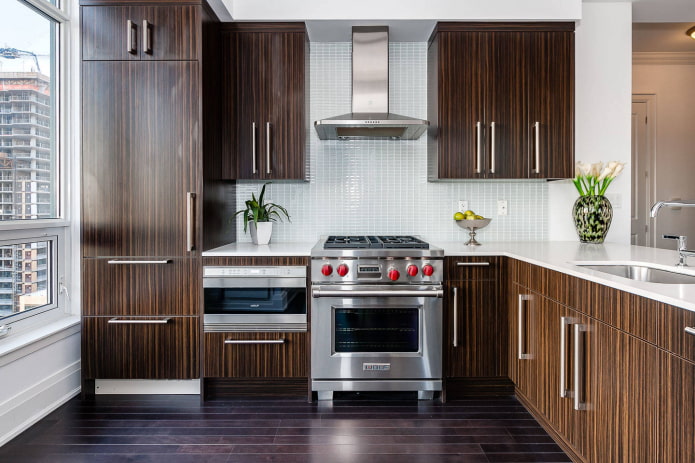
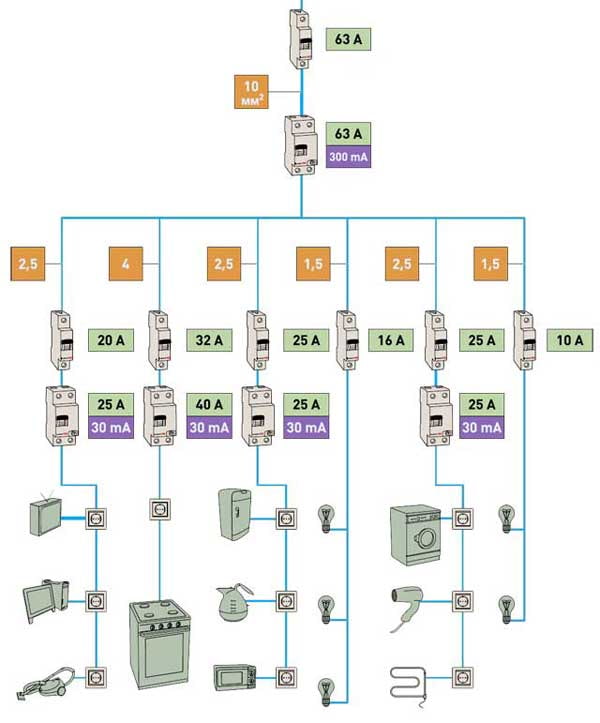
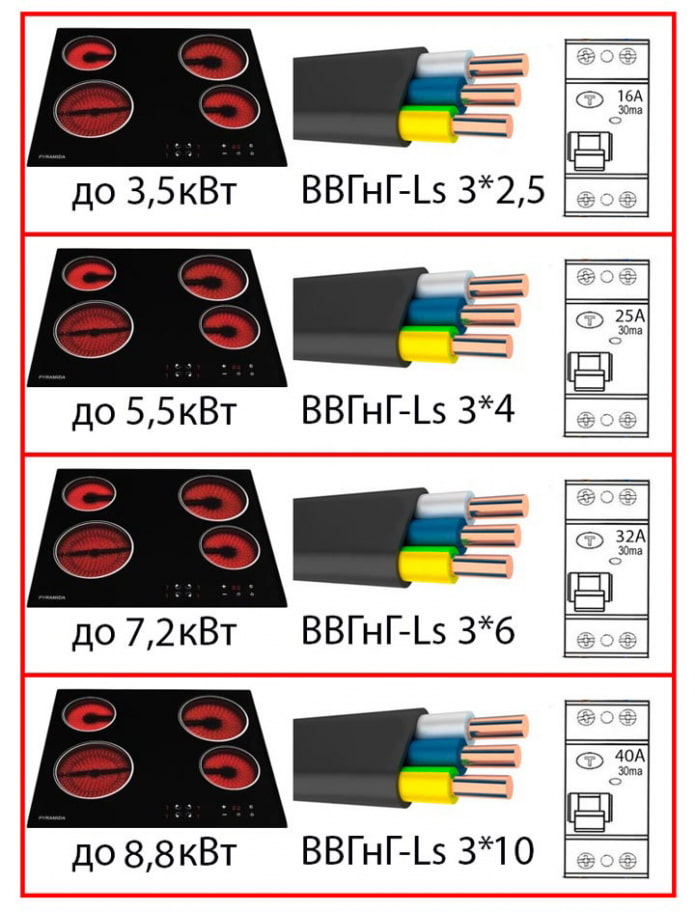
 How to choose the color of your kitchen sink?
How to choose the color of your kitchen sink? White kitchen set: features of choice, combination, 70 photos in the interior
White kitchen set: features of choice, combination, 70 photos in the interior Black set in the interior in the kitchen: design, choice of wallpaper, 90 photos
Black set in the interior in the kitchen: design, choice of wallpaper, 90 photos How to choose curtains for the kitchen and not regret it? - we understand all the nuances
How to choose curtains for the kitchen and not regret it? - we understand all the nuances Design of a white kitchen with a black countertop: 80 best ideas, photos in the interior
Design of a white kitchen with a black countertop: 80 best ideas, photos in the interior Kitchen design with green wallpaper: 55 modern photos in the interior
Kitchen design with green wallpaper: 55 modern photos in the interior